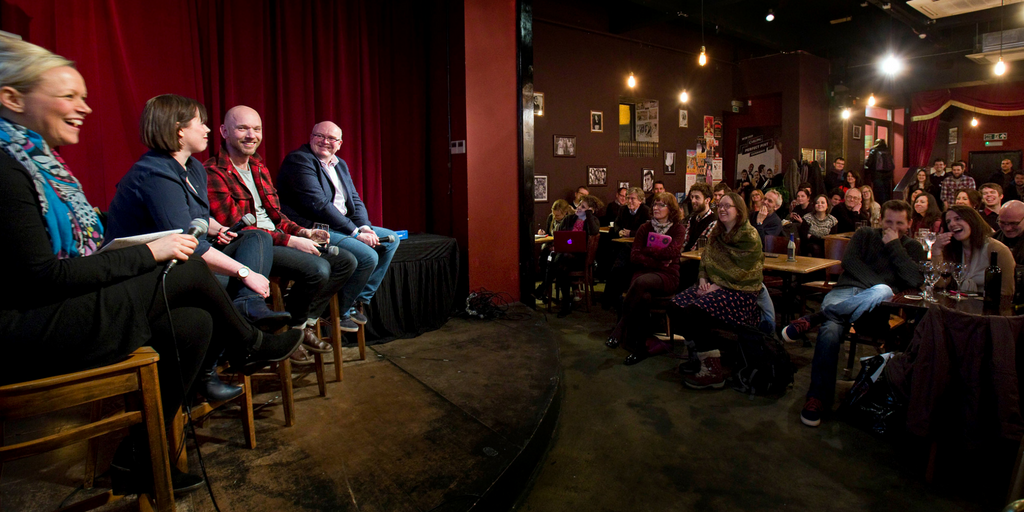For nearly a decade the creative industries and wider creative economy have been the fastest growing part of the UK economy. Recent figures published by the Department for Culture, Media and Sport reveal that they generate nearly £9.6million per hour, contribute almost £90bn net to GDP and account for one in eleven jobs, a rate rising more quickly than all other parts of the economy.
It is also widely reported that the creative industries generate value that spreads far wider than the sector itself. They are a driver of business and activity for other sectors and support a wider supply chain; including the employment of over 800,000 creative occupations outside of the sector.
Alongside this growth, there has been a heavy emphasis on place-based innovation and encouraging regional networks and clusters. We have known for some time that creative activity makes cities more interesting, liveable and vibrant. Initiatives such as the Northern Powerhouse and the Midlands Engine are developing their creative economy offering through better connectivity, brand, profile, cohesion as well as the ability to secure foreign direct investment, boost productivity and exports.
Trends in the growth of the creative economy are, for example, highly visible in the economy of Wales. Identified as a Welsh Government economic development priority since 2011, there has been significant progress across the whole creative economy, from music and performance to digital marketing. In 2015 NESTA produced an estimate that the creative economy in Wales accounted for 77,483 jobs, including 22,324 jobs within the wider Cardiff Travel to Work area.
Cardiff has seen significant growth over the past decade. Our region is home to world-renowned creative industries and organisations, from major worldwide corporations to thriving SMEs and a rapidly developing digital economy. Alongside this, the development of the Cardiff Capital Region has also started to provide opportunities for greater cohesion, connecting the city to the regional economy, which is populated largely by small firms. But there is still work to be done to enable the wider Great West region to achieve its maximum potential with regards to creative economy activity.
The Arts and Humanities Research Council project REACT (Research & Enterprise in Arts & Creative Technology), one of four knowledge exchange hubs for the creative economy, began in 2012 with a goal to inject new depth and momentum into collaboration between arts and humanities academics and creative businesses. REACT brought together UWE Bristol and the Watershed with the GW4 universities of Bath, Bristol, Cardiff and Exeter.
Building upon the legacy of REACT, Cardiff University recruited a Creative Economy team in 2014 with an ambition to better understand, engage and enable the wider creative economy in the region. A central ambition of our work is for our city to be a capital of creativity. We’re sure the way to do this is by working collaboratively and playing to our collective strengths and this belief has formed the backbone of our approach.
In 2016 the team produced a detailed map of the creative economy workforce in Cardiff in order to understand the size, shape and clustering. The research identified 2,788 creative companies, organisations and freelancers in Cardiff and surrounding wards. The report, Mapping Cardiff’s Creative Economy, established that proximity to the city centre and the tendency of creative activity to cluster in particular neighbourhoods are the two main factors in the presence of creative activity. We hope to repeat this research in 2018 to include the city region.
Another issue identified early in this work was the lack of connectivity and silo working in different parts of the creative and cultural industries. We developed the Creative Cardiff Network to start addressing these issues and, 18 months on, we have an 1100-strong membership of creative people and organisations in Cardiff and the city region. Feedback from the network has highlighted the benefits for individuals – including the rapidly growing freelancer community – and organisations through better connectivity, engagement and networking opportunities as well as access to jobs.
We have also recently embarked upon a partnership with Cardiff City Council, supported by Arts Council of Wales, to re-imagine and trial new approaches to promote and develop Cardiff’s creative economy. The main aim of this partnership is to work with, and on behalf of, the creative community in the city to ensure the opportunity for co-creation and co-delivery wherever possible. We are focusing on an agenda of practical initiatives which enable high impact contributions to the city’s creative economy in a time of tight financial constraints. Through Cardiff Council’s links to the UK Core Cities network of local authorities, we aim to learn from and to influence creative economy initiatives in other UK cities. The spirit of this ongoing collaboration was captured in a conference held at Cardiff University in December 2016: Cardiff – Creative Capital.
We have also been undertaking work to explore and promote creative hubs and co-working spaces in the city region. These spaces have become essential to how creatives work and as such, to the growth and development of the creative economy globally. Over the past two years in particular, we’ve seen a number established – all differing in their offer. We have been doing work to develop our knowledge and understanding of these spaces. This is not limited to the physical space which they occupy, but by the services they provide and their contribution to the wider creative community including how and why they support the growth of this sector, at the same time as building a community of like-minded individuals.
In doing all of the above we have developed a clearer picture of the city itself as a creative space as well as the workforce driving this activity. But there is still work to do to clarify this picture and develop a long term strategy to support it in its next phase. Many have an intuitive impression of Cardiff as a city with a significant cultural sector, but less is known about the shape, character and breadth of the city’s creative economy.
There is great potential to develop this work across the wide region spanned by the GW4 Alliance. All four universities involvement in the REACT project have helped develop relationships between academics and practitioners in the creative and digital sector. We look forward to working closely with Professors Anthony Mandal and Tim Cole on GW4 Bridging the Gap to share good practice and take the work begun by REACT to the next level.
Sara Pepper is Director of Creative Economy at Cardiff University.







